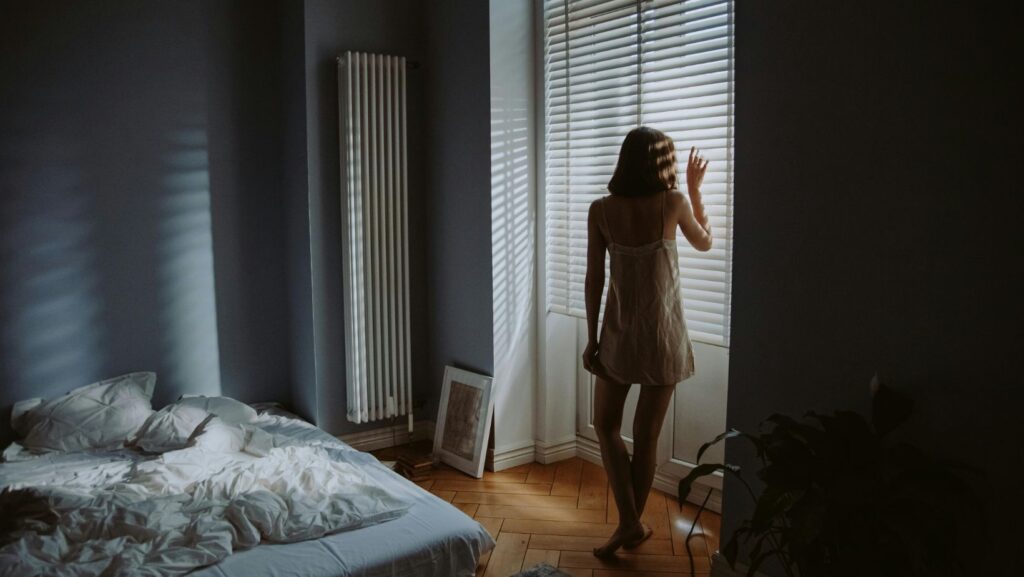Table of Contents
ToggleCut your energy bills while improving style and comfort?
If you thought your windows were just there to look nice, think again. Surprisingly, your house windows are likely costing you hundreds of pounds each year! According to the U.S. Department of Energy, around 30% of your home’s energy escapes right through those beautiful panes of glass. That’s a huge portion of your hard-earned money spent heating and cooling your home unnecessarily.
But wait, there’s more…
Window shutters and blinds these days are a far cry from those old lace curtains or venetian blinds from Grandma’s house. They’ve become an important part of home design, with a huge impact on energy efficiency and transformation of your home interior. Whether you are building a new home or making over your current one, choosing the right window treatments from a leading roller shutters company in Belfast Northern Ireland can make a huge difference to both comfort and energy bills each month.
Here’s what we cover:
- The importance of window shutters and blinds
- Window treatment science
- Choosing the best energy efficient options for your home
- Maximizing efficiency
The Importance of Window Shutters and Blinds
Windows are the weak link in your homes energy envelope. Even double or triple glazed windows let far more heat transfer than your walls or roof.
Window shutters and blinds act as a supplemental barrier between the indoors and outdoors. This traps pockets of air, reflects sunlight and helps to limit heat transfer. All of which means your heating and cooling system doesn’t need to work as hard, saving you money on energy bills every month.
Window Treatment Science
Not all window shutters and blinds are created equal. In fact, research out of Glasgow Caledonian University found that when properly installed, window shutters reduce heat loss by up to 51% compared to bare windows. This is a huge performance jump compared to curtains (14%) or roller blinds (28%).
The reason window shutters perform so much better is because of the density of the materials used and the creation of a small air gap between window and shutter. Quality shutters create a near sealed air pocket between the shutter and the window glass. This trapped air acts as an insulator, dramatically reducing heat transfer.
Window shutters can be extremely energy efficient
Plantation Shutters: The Champions of Energy Efficiency

Plantation shutters are the clear winner in the energy efficiency stakes.
Adjustable louvres allow you to precisely control the light and air entering a room. Fully closed, plantation shutters create a near airtight seal. Here’s what’s so effective about them:
Better R-Values: Plantation shutters have R-values of between 3 and 6. Compare this to just 1-2 for most other blinds. The higher the R-value the better the insulating performance.
Winter AND Summer Benefits: Shutters are great in winter as closed louvres trap warm air inside. In summer, you can just tilt louvres to block out direct sunlight. This makes shutters a highly versatile year-round option.
Wood or Faux Wood Options: Wood shutters look great and provide good insulation. Faux wood or composite shutters perform even better, with hollow core construction offering up to 70% more energy efficiency than solid wood.
For best results, shutters are mounted inside the window recess for a very tight seal and optimal thermal performance.
Modern Blinds: High Value Energy Sippers
While shutters take the crown for maximum energy efficiency, modern blinds are a close second.
Modern blinds are a great value. They’re lower cost than shutters, come in huge variety and still provide impressive energy savings. Cellular or honeycomb blinds are among the best. They are constructed to create air pockets within each of the fabric cells, much like bubble wrap. The Department of Energy reports that highly reflective blinds can reduce heat gain by around 45% when closed.
Venetian blinds with reflective coating can be excellent for summer. Just tilt the slats to reflect sunlight up toward the ceiling, brightening the room without adding heat.
Choose blinds that fit as close to your window frame as possible for maximum performance.
The Best Window Treatments For Energy Efficiency in Your Home
Shutters or blinds? It can be hard to decide which type is best for your needs.
Ask yourself these questions:
Budget: Blinds are your most affordable option, and shutters are your most expensive. Keep in mind plantation shutters add value and last decades.
Climate: Extreme hot/cold weather? Shutters give you the best all-year-round performance. Mild climates will be just fine with high quality blinds.
Room Use: South-facing rooms with intense sun can really benefit from shutters. Bedrooms are perfect for blackout cellular shades.
Style: Window shutters and blinds come in endless styles and finishes to match your home. Choose something that makes you happy to look at every day.
Layering shutters with thermal curtains provides even more insulation in extreme climates.
Window Treatment Installation Best Practices
Don’t skimp on installation if you want your shutters or blinds to perform well. Quality installation is key to maximizing energy efficiency.
For shutters, the frame should fit snugly within the window recess, with as little gap as possible. Professional installers will measure and re-measure to make sure the fit is perfect. Small gaps can hugely reduce the thermal performance.
With blinds, make sure the mounting brackets are secure and level. Extend the blinds beyond your window frame a few inches for best results, with minimal gaps and air leakage.
Simple Window Treatment Maintenance Tips
Quality window shutters and blinds will last years with minimal maintenance.
Shutters require next to no maintenance at all. Give them a wipe down with a damp cloth every few weeks, and check the hinges every once in a while. Tighten any screws that have come loose.
Fabric blinds need a little more regular maintenance, such as vacuuming. Vinyl or aluminum blinds can be wiped down occasionally.
Pro tip: Use window shutters and blinds strategically. Shut them during peak summer days and open them during sunny winter mornings to let in warmth.
In Conclusion
Window shutters and blinds are a game changer for reducing your energy consumption.
Up to 51% reduction in heat loss with quality shutters and up to 45% reduction in heat gain with reflective blinds can translate to significant savings in energy bills. Easily enough to recoup your investment.
It’s a matter of finding the right solution that matches your budget, climate and home design goals. Whether you choose plantation shutters or cellular blinds, installation and usage matter. Opt for quality window shutters and blinds that fit well and use them intelligently to maximize savings.
Don’t leave bare windows robbing you of both comfort and money. Choose quality window shutters and blinds and start saving today.

